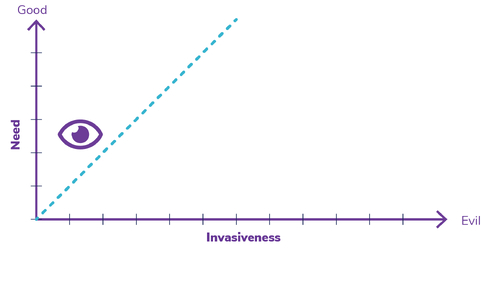Step 1: Define User Cases and Goals
Onderdeel van
Trefwoorden
You need to establish WHY you are using computer vision technology in public spaces and WHAT you want to achieve in order to justify the project legally and ethically.
1.1 Questions
There are many ethical considerations to take every step of the way and you need to be aware of the invasiveness of crowd monitoring technology in a social context to inform responsible decisions.
- What exactly do we want to achieve? What (positive) change do we want to enable and how? Establish goals but try to be realistic.
- Is there a real problem that can ONLY be solved with a crowd monitoring solution? How do we address and minimize invasiveness?
- What will the positive and negative impact be if we use video cameras and camera vision in a public space? What are the benefits and risks?
- What is Privacy by Design and how do we use this as a guiding principle in our project?
- Can you implement a crowd monitoring test, project, or solution that is transparent and inclusive rather than exclusively imposing surveillance?
- How do I use crowd monitoring with the public in mind to create awareness rather than control?
- What assumptions do we want to validate? Do we have the resources to test and confirm hypotheses?
- Is there existing data? How do we create a baseline so we can measure impact and define success?
1.2 Privacy By Design
Privacy By Design is part of the EU General Data Protection Regulation (GDPR) and should be understood at the beginning of any crowd monitoring project. In short it simply means “data protection through technology design.” It is the umbrella to cover your decision making process and ensure responsible and ethical decisions. For more about Privacy by Design visit the GDPR information webpage https://gdpr-info.eu/issues/privacy-by-design/
A good place to start applying Privacy by Design is to think about different crowd monitoring technologies in the context of data ethics and social values. To find out more about visit:
- https://tada.city
- https://www.ams-institute.org/urban-challenges/urban-data-intelligence/responsible-sensing-lab/
- https://citiesfordigitalrights.org
For a quick scan of the risks and benefits of several sensoring options take a look at the comparison sheet below.
BENEFITS
YOUR GOALS SHOULD RELATE TO REAL NEEDS AND CREATING SOCIAL IMPACT IN PUBLIC SPACES
- PUBLIC HEALTH and SAFETY
- IMPROVE CITY SERVICES
- OPTIMISE PUBLIC SPACE
- SOCIAL DISTANCING
- REDUCE COSTS
- ENVIRONMENTAL QUALITY
- POLICY / PLANNING
TECHNOLOGY
TECHNOLOGY CAN BE USED TO MONITOR CROWDS. CONSIDER THE POTENTIAL INVASION TO PRIVACY
- CCTV
- COMPUTER VISION
- MOTION SENSORS
- RADAR
- WIFI SNIFFING
- BLE (Bluetooth)
- VIBRATION
- THERMAL
- MOBILE APPS and GEO FENCING
- MICROPHONES and SOUND SENSORS
RISK
CONSIDER THE LONG TERM SOCIAL CONTEXT AND ETHICAL DANGERS FOR YOUR CROWD MONITORING PROJECT
- RIGHTS EROSION
- PUBLIC TRUST
- INVASION OF PRIVACY
- SOCIAL ENGINEERING
- SURVEILLANCE STATE
- COMPROMISED FREEDOMS
- LEGAL
1.2.1 – Proportionality
When deciding what technology to use it is important to assess the proportionality of the measures you are taking to achieve your goal versus how they could limit fundamental rights to the protection of personal data.

1.2.2 – Use Case and Goal Examples
- Use Case 1: Recreational Crowd Study http://www.citixl.com/recreational-crowd-study/
- Use Case 2: OSCM Testing at the Marineterrein. Counting Vistors During the Hot Summer https://www.marineterrein.nl/en/project/open-source-crowd-monitor/
- Use Case 3: Addressing COVID-19 related social distancing in public spaces with real time interactive data visualizations. https://www.marineterrein.nl/nu/
Afbeelding credits
Icon afbeelding: Public Domain Pictures - Deep purple

